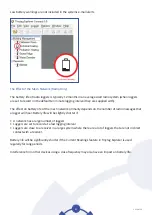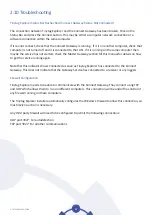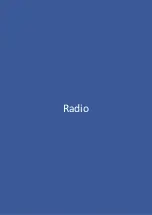
44
3.1 RADIO SPECIFICATION
3.1 Radio Specification
Different radio frequencies are used for different countries:
869.8MHz
Used in the EU. Devices using this frequency can be identified by their part number
ending –A. Older part numbers which do not have a single letter part number suffix
also use this frequency.
917.8MHz
Used in Australia. Devices using this frequency can be identified by their part number
ending -B.
Naturally, parts using different frequencies cannot interoperate.
The radio uses FSK modulation, with +/-32 kHz deviation.
The transmission power is <5mW in EU & <3mW in Australia.
Typical range in free space:
Ultra Radio
100m
Plus Radio
200m
These frequencies will easily penetrate most internal or external walls; however the range may be
reduced.
Indoors the range is quite variable. It is usually reduced to between 30% and 80% of full range. However
it will sometimes be increased, maybe up to double the nominal range, due to reflections off other
buildings, steel roofs, etc. This variability works to the advantage of the mesh network because the
majority of loggers will be able to relay their information via the one logger with the extra-long range.
The radio system works well both indoors and out. The frequencies will usually penetrate steel-walled
rooms to a degree, through door seals, windows, ventilation etc. Even though the radio waves cannot
penetrate a metal wall (whether a fridge, or corrugated iron shed), the signal will probably still get
through gaps around door seals and other openings.
These frequencies are very slightly absorbed by water. Wet walls are not a problem, but the signal will
not get through a room filled with shelves full of fruit, for example.
Содержание Tinytag Connect
Страница 1: ...Tinytag connect User Manual Tinytag Explorer Connect Software Included...
Страница 2: ......
Страница 5: ...Getting Started...
Страница 22: ...20...
Страница 23: ...System Information...
Страница 45: ...Radio...
Страница 63: ...Ethernet LAN...
Страница 70: ......
Страница 71: ......
















































